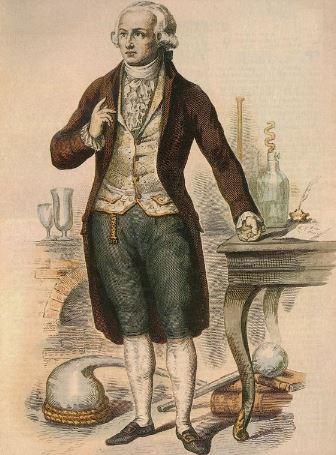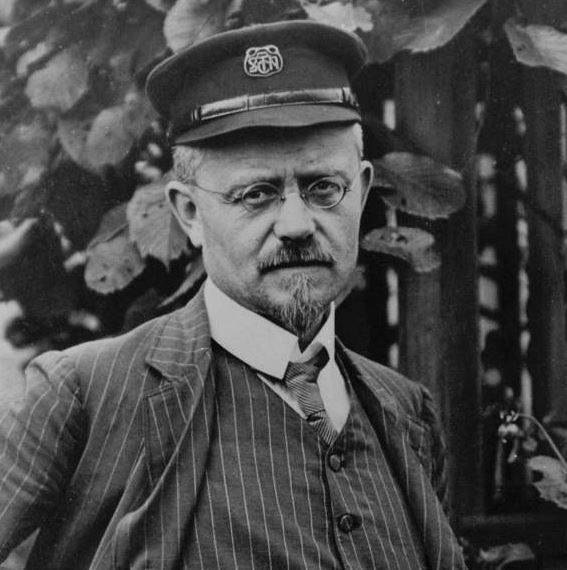Antoine Laurent Lavoisier (1743–1794) was a pioneering French chemist who is often regarded as the “Father of Modern Chemistry” for his significant contributions to the field. His work revolutionized the understanding of chemical reactions, laid the foundation for the Law of Conservation of Mass, and played a crucial role in the development of the modern chemical nomenclature. Lavoisier’s experiments and theories transformed the study of chemistry from a qualitative to a quantitative science.
This article explores Lavoisier’s life, major scientific achievements, and his enduring legacy in chemistry.
Early Life and Education
Antoine Lavoisier was born on August 26, 1743, in Paris, France, to a wealthy family. His early education focused on the sciences, particularly chemistry, biology, and mathematics. Lavoisier initially studied law, as was expected by his family, but his passion for science soon led him to devote his career to chemistry.
He became involved with scientific societies in Paris, including the Academy of Sciences, where he interacted with prominent intellectuals and gained exposure to cutting-edge research. His background in mathematics and logic played a crucial role in shaping his approach to scientific inquiry.
Major Scientific Achievements
Law of Conservation of Mass
One of Lavoisier’s most significant contributions to science is the Law of Conservation of Mass, which states that mass is neither created nor destroyed in a chemical reaction. This fundamental principle transformed the study of chemical processes and established a foundation for modern chemistry.
- Key Experiment: In a series of meticulous experiments, Lavoisier demonstrated that the mass of the products in a chemical reaction is always equal to the mass of the reactants. One famous experiment involved the heating of mercury oxide, which decomposes into mercury and oxygen. Lavoisier’s precise measurements showed that the total mass remained constant, leading to the formulation of the Law of Conservation of Mass.
Oxygen Theory and Combustion
Lavoisier is perhaps best known for his work on combustion and the identification of oxygen as a key element in chemical reactions. Prior to Lavoisier’s research, the dominant theory of combustion was the phlogiston theory, which posited that a mysterious substance called phlogiston was released during burning.
Lavoisier’s experiments debunked the phlogiston theory and established a new understanding of combustion:
- Oxygen’s Role: Lavoisier demonstrated that combustion involves a reaction with oxygen rather than the release of phlogiston. He showed that substances, such as metals, gained mass when they reacted with oxygen from the air, forming metal oxides.
- Naming of Oxygen: Lavoisier coined the term “oxygen” (from Greek words meaning “acid-former”) because he initially believed oxygen was a component of all acids. While this belief was later corrected, his identification of oxygen’s role in combustion and respiration was groundbreaking.
Chemical Nomenclature and Classification
Lavoisier played a crucial role in the development of a systematic and logical chemical nomenclature that is still in use today. Along with other chemists like Claude Louis Berthollet, Antoine François de Fourcroy, and Guyton de Morveau, Lavoisier introduced a naming system based on the composition of substances rather than their mystical or alchemical properties.
- Naming Elements and Compounds: Lavoisier helped classify elements and compounds, using names that reflected their chemical properties. For example, compounds of oxygen were named oxides, and compounds of sulfur were named sulfides.
- First Modern Chemistry Textbook: Lavoisier’s book, Traité Élémentaire de Chimie (Elementary Treatise on Chemistry, 1789), is considered the first modern chemistry textbook. It introduced the concept of chemical elements as basic building blocks of matter and established the first modern list of elements, which included oxygen, hydrogen, sulfur, and carbon.
Understanding Gases and Water Composition
Lavoisier also contributed to the understanding of gases, particularly the composition of air and water:
- Composition of Water: Lavoisier, in collaboration with Pierre-Simon Laplace, demonstrated that water is composed of oxygen and hydrogen, disproving the long-held belief that water was a basic element.
- Composition of Air: Lavoisier showed that air is not a single element but a mixture, consisting primarily of oxygen and nitrogen. This helped clarify the role of oxygen in both combustion and respiration.
Contributions to Public Service and Agriculture
In addition to his scientific achievements, Lavoisier was involved in public service. He worked as a tax collector for the Ferme Générale, a private tax collection agency, and used his wealth to fund his scientific research.
Lavoisier was also a forward-thinking advocate for agricultural reform in France. He applied scientific principles to improve agricultural productivity, including soil analysis and the promotion of new farming techniques.
Downfall and Death
Lavoisier’s association with the Ferme Générale, which was unpopular during the French Revolution due to its role in collecting taxes from the peasantry, ultimately led to his downfall. Despite his contributions to science and public service, Lavoisier was arrested during the Reign of Terror in 1794, accused of tax fraud and counter-revolutionary activities.
On May 8, 1794, at the age of 50, Lavoisier was executed by guillotine. The mathematician Joseph-Louis Lagrange famously remarked, “It took them only an instant to cut off that head, but France may not produce another like it in a century.”
Legacy
Antoine Lavoisier’s impact on the field of chemistry is immeasurable. His work laid the foundation for modern chemical theory, and his principles continue to be fundamental to scientific research. His legacy includes:
- Scientific Methodology: Lavoisier emphasized careful measurement and experimentation, transforming chemistry into a rigorous, quantitative science.
- Law of Conservation of Mass: The principle that mass is conserved in chemical reactions remains a cornerstone of chemistry.
- Modern Chemical Nomenclature: The systematic naming of elements and compounds, initiated by Lavoisier, is still in use today.
- Influence on Future Scientists: Lavoisier’s work inspired future generations of scientists, including John Dalton and Dmitri Mendeleev, to expand on his theories and discoveries.
Antoine Laurent Lavoisier revolutionized chemistry, transforming it from a speculative discipline into a modern science based on empirical evidence and quantitative analysis. His discoveries, including the identification of oxygen’s role in combustion, the Law of Conservation of Mass, and the creation of a systematic chemical nomenclature, have had a lasting influence on science. Despite his tragic end during the French Revolution, Lavoisier’s contributions to chemistry remain foundational, earning him a place as one of the most important figures in scientific history.




